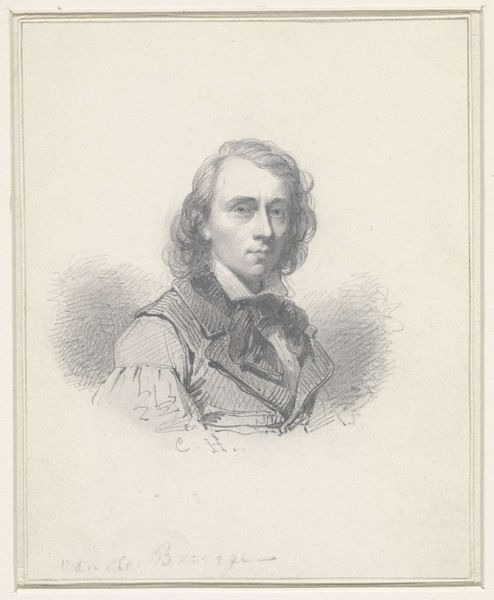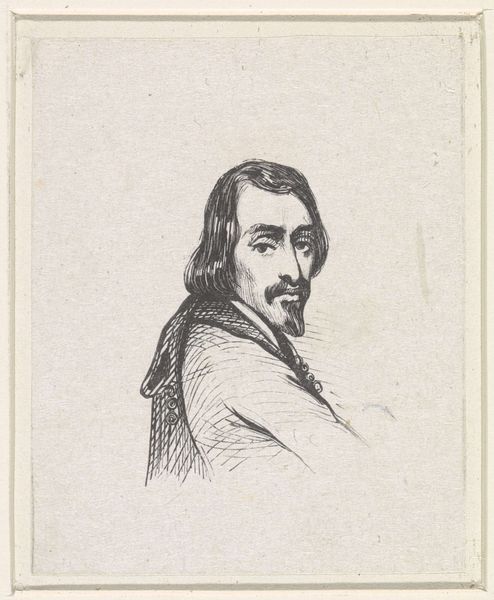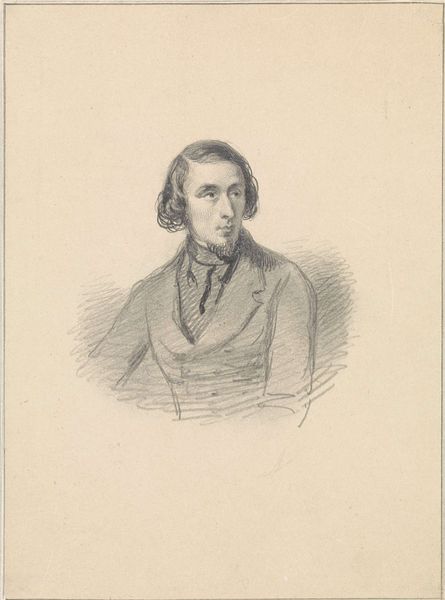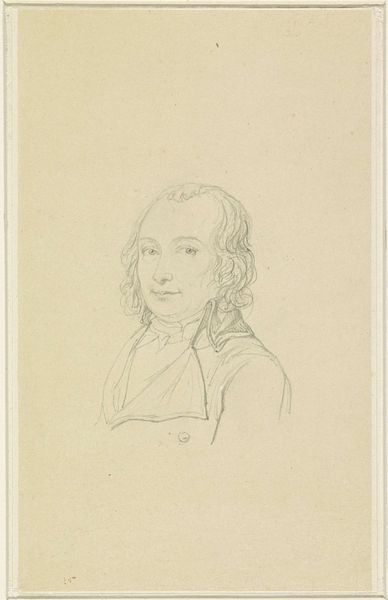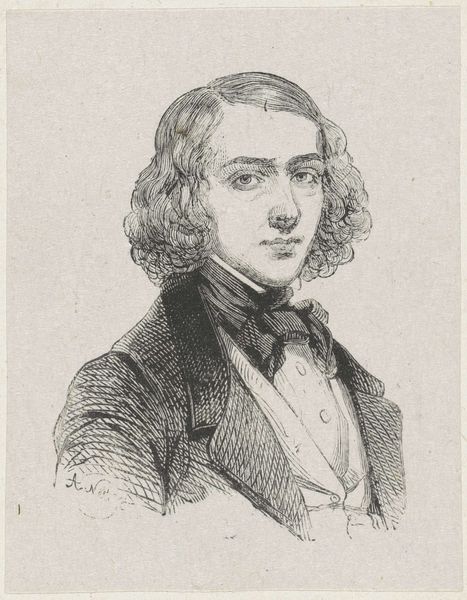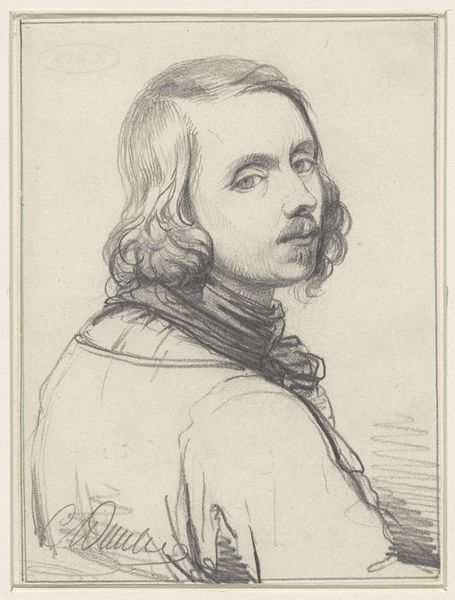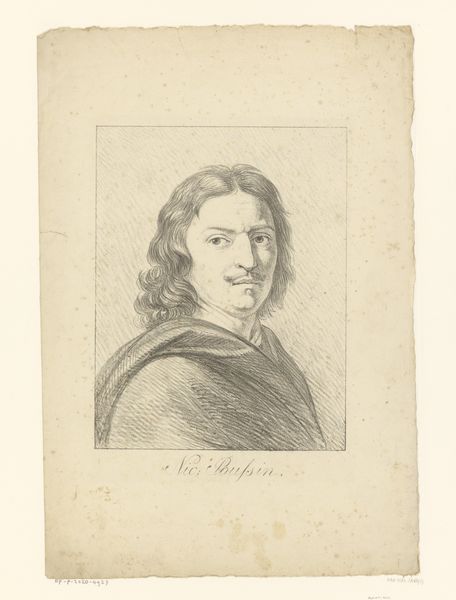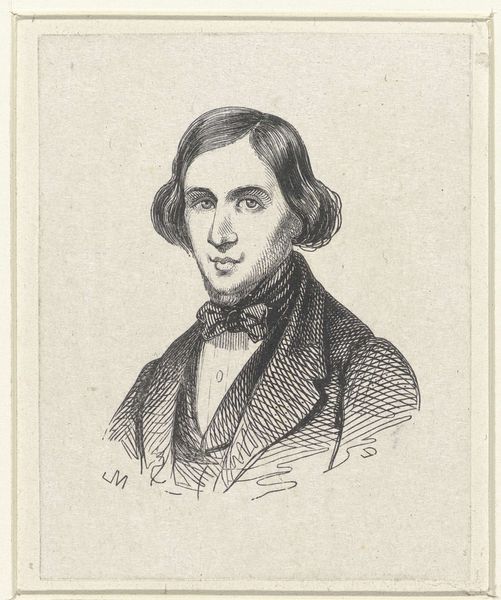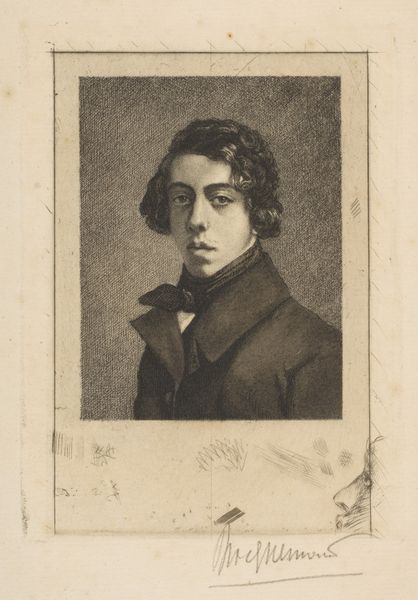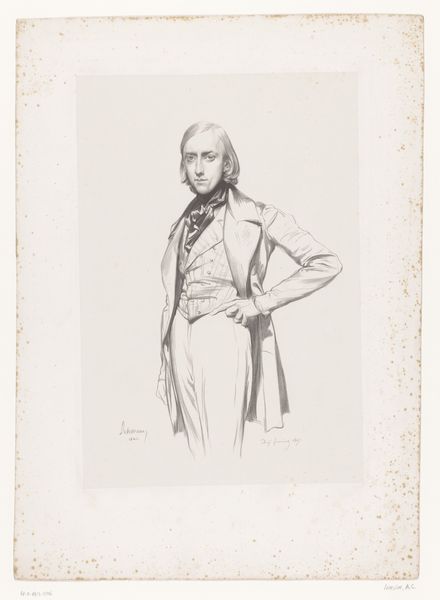
drawing, pencil
#
portrait
#
drawing
#
pencil drawing
#
romanticism
#
pencil
Dimensions: height 43 mm, width 35 mm
Copyright: Rijks Museum: Open Domain
Curator: This is a pencil drawing from between 1841 and 1842, titled "Portret van Guilaume Anne van der Brugghen." The artist, unfortunately, remains anonymous. Editor: My first impression is melancholy. The figure’s gaze is intense, almost confrontational, yet there’s a vulnerability hinted at by the soft lines of the pencil. Curator: Given the time period, its important to consider how the Romantic movement idealized the individual, often portraying them as brooding intellectuals wrestling with the complexities of the world. We must think about the rise of bourgeois portraiture as a statement of individual worth, a reflection of socio-economic aspiration and identity. Editor: I see echoes of Romanticism in the flowing hair and slightly disheveled appearance, but I'm also drawn to the almost Gothic feel around the neck, perhaps evoking death masks of prominent scholars and aristocratic figures of the age. Can we even presume about a meaning without biographical insight? Curator: Absolutely, we are constrained to imagine who Brugghen was by considering his historical position. Consider what it meant to be a middle-class man, with certain status to retain, and how it all trickled down to portraiture, even from an unknown draughtsman. Editor: There’s a symbolic ambiguity in the artist’s rendering of the clothes. It is a rough cross hatch and is hard to place definitively within contemporary aristocratic norms, isn’t it? A pencil drawing may imply greater intimacy, given its less formal quality? Curator: This more raw or vulnerable portrayal serves to individualize van der Brugghen within the broader context of societal shifts occurring throughout 19th-century Europe. Editor: Fascinating. I’m left contemplating how personal expression is subtly embedded even in such seemingly straightforward depictions of class and masculine identity. Curator: Indeed, and reflecting on art's capacity to simultaneously echo and challenge cultural norms allows us to view the sitter as a multi-dimensional participant in those norms.
Comments
No comments
Be the first to comment and join the conversation on the ultimate creative platform.
